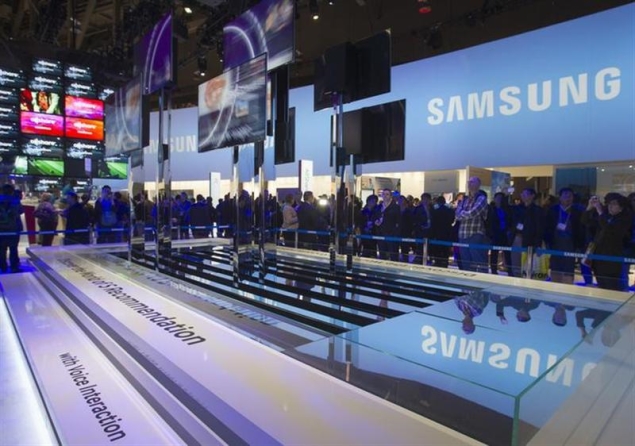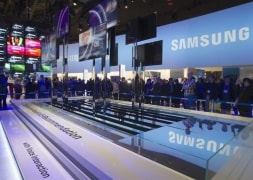Reuters.

Samsung Electronics Co Ltd slapped a $13,000 price tag on its first
curved, super-thin OLED television to go on sale, the same price as
rival LG Electronics Inc and one that underscores the high costs of the
technology.Samsung is hoping that its success with OLED screens in
smartphones such as its Galaxy S4 will also pay off in TVs, but
consumers interested its 55-inch screen television must be willing to
pay some five times more than popular flat-screen equivalents.
At the moment, OLED televisions are still very much a niche market and Samsung warned that industry forecasts for sales growth were a bit too optimistic.
"We have just introduced our first OLED TV and have to see consumer response to gauge overall market demand," Kim Hyunsuk, a Samsung executive vice president, told reporters.
Research firm DisplaySearch has forecast global industry-wide sales of OLED televisions at 50,000 this year, at 600,000 next year and rapid growth thereafter to reach 7 million in 2016.
LG, which currently offers both curved and non-curved 55-inch screens, is estimated to have only sold a few hundred screens so far after starting sales earlier this year.
Samsung said it will begin selling its curved OLED television outside South Korea from July but did not specify which countries. It has no plans to offer a non-curved one this year.
Organic light-emitting diode technology has long been touted as the future of consumer electronics displays, offering crisper picture resolution, a faster response time and high contrast images. It also allows for curved televisions, which manufacturers say offer a more immersive TV experience.
Both Samsung and rival LG Display, a unit of LG Electronics, have invested heavily in OLED, seeking to emulate the success they had with LCDs, which helped them squash Japanese rivals such as Sony Corp and allowed them to capture coveted roles as suppliers for Apple Inc.
Samsung is now the world's biggest TV manufacturer, and the South Korean duo now sell almost half of all TVs worldwide.
Not one to put all its eggs in one basket, Samsung also unveiled on Thursday 55-inch and 65-inch ultra-high definition (UHD) TV sets, which offer crisper LCD picture resolution.
Ultra HD TV sales are likely to grow 930,100 this year from 9,600 last year and may jump to 3.9 million sets next year, according to DisplaySearch.
© Thomson Reuters 2013

Samsung TVs
At the moment, OLED televisions are still very much a niche market and Samsung warned that industry forecasts for sales growth were a bit too optimistic.
"We have just introduced our first OLED TV and have to see consumer response to gauge overall market demand," Kim Hyunsuk, a Samsung executive vice president, told reporters.
Research firm DisplaySearch has forecast global industry-wide sales of OLED televisions at 50,000 this year, at 600,000 next year and rapid growth thereafter to reach 7 million in 2016.
LG, which currently offers both curved and non-curved 55-inch screens, is estimated to have only sold a few hundred screens so far after starting sales earlier this year.
Samsung said it will begin selling its curved OLED television outside South Korea from July but did not specify which countries. It has no plans to offer a non-curved one this year.
Organic light-emitting diode technology has long been touted as the future of consumer electronics displays, offering crisper picture resolution, a faster response time and high contrast images. It also allows for curved televisions, which manufacturers say offer a more immersive TV experience.
Both Samsung and rival LG Display, a unit of LG Electronics, have invested heavily in OLED, seeking to emulate the success they had with LCDs, which helped them squash Japanese rivals such as Sony Corp and allowed them to capture coveted roles as suppliers for Apple Inc.
Samsung is now the world's biggest TV manufacturer, and the South Korean duo now sell almost half of all TVs worldwide.
Not one to put all its eggs in one basket, Samsung also unveiled on Thursday 55-inch and 65-inch ultra-high definition (UHD) TV sets, which offer crisper LCD picture resolution.
Ultra HD TV sales are likely to grow 930,100 this year from 9,600 last year and may jump to 3.9 million sets next year, according to DisplaySearch.
© Thomson Reuters 2013

Samsung TVs
No comments:
Post a Comment